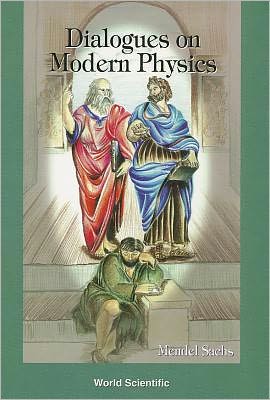

 |

|

The average rating for Dialogues on Modern Physics based on 2 reviews is 2.5 stars.
Review # 1 was written on 2013-08-16 00:00:00 Bran San Bran SanDecoherence and the Appearance of a Classical World in Quantum Theory is a cooperative book by a number of prominent quantum theorists, including H.Dieter Zeh, the author of the original paper proposing the theory of "decoherence." This essay (which I am dying to read) is contained in a book edited by Wheeler and Zurek (1983) which has become rare (as a hen's tooth or as a real thing in quantum mechanics.) The subject of the current book is the elaboration of this theory, which is becoming a dominant force in theoretical physics, but which defies explanation in simple terms. You have all heard of Schrodinger's cat, killed or not, depending on "the measurement problem." Well, it has something to do with the transition from the quantum to the classical world. From a world of "non-locality" to one where the planet's arcs can be reasonably predicted. A quote from the introduction by E. Joos: "Measurement-like processes would necessarily produce nonclassical macroscopic states as a consequence of the unitary Schrodinger dynamics. An example is the infamous Schrodinger's cat, steered into a superposition of "alive" and "dead". Such states would of course not merely describe ensembles of macrostates, but entirely new states, in the same sense as the superpostion of a K meson and its antiparticle, which leads to the "new" particles Klong and Kshort." Got that? OK, but what exactly is "decoherence"? Presumably the opposite (in some sense) of coherence; but the opposite of the coherence of what, exactly? Here is Joos's attempt at a definition: "The description of open quantum systems is, however, entirely different from the corresponding situation in classical theories. The formalism of quantum theory uses the concept of a density matrix for characterizing parts of a larger system (which in general has to be described by an entangled quantum state). It is the properties of this density matrix that now appear to be able (in a sense to be discussed in detail) to explain the classical behavior of macroscopic objects. In particular, the annoying superpositions of macroscopically different properties can be shown to disappear from these density matrices on an extremely short timescale. This process is called "decoherence." Helpful? Perhaps this will help more: "Quantum entanglement is often viewed as an exceptional situation. This is quite wrong. Granted, experiments showing quantum nonlocality {the Aspect experiments, for example (my add)} require careful preparation of a few entangled degrees of freedom. On the other hand, as we will vividly see in this book, entangled states are the most natural situation we have to expect if quantum theory is universally valid - in particular in the macroscopic domain, where entanglement leads to the appearance of the classical world." So far I haven't "vividly seen" anything in this book except for the following quote from Emile Borel, French mathematician of the turn of the nineteenth to the twentieth century; this quoted in Chapter 3 by Joos ("Decoherence Through Interaction with the Environment"). "La representation d'une masse gazeuse . . . forme de molecules dont les position es les vitesses a un instant donne sont rigoureusement determines, est donc une pure fiction abstraite; . . . . aussi que l'on suppose l'indetermination des forces exterieures, l'effet des chocs disperse tres rapidement les fascieaux de trajectoires supposes infiniment delies et le probleme du mouvement ulterieur des molecules devient, en tres peu de secondes, tres indetermine, en ce sense qu'un nombre colossalement grand des possibilites differentes son a priori egalement probables." Borel is also responsible for the idea that the influence of a small mass of a few grams as far away as Sirius could have a significant effect on the trajectories of air molecules here on Earth. Now that is some kind of "Om . . . . . . . . . . . . . . . . . . . . . . . . . . . . . . . . . . . . . . . . . . . . . . . . . . . . . . . . . . . . . . . . . . . . . . . . . . . . . . . . . . . . . . . . . . . . . . . . . . . . !" Reminds me of a great quote by Bill Porter in his commentary on The Heart Sutra from Edward Conze, "Aristotle pointed out in his Metaphysics that the rejection of the principle of contradiction must lead to the conclusion that 'all things are one.' This seemed to him manifestly absurd. Here, conversely, the insight into the oneness of all is the great goal, and only by contradictions can it be obtained' (Buddhist Wisdom Books, p 84.) Aristotle, of course was wrong, on logical grounds. But quantum mechanics seems to say that 'all things are one' makes great sense in 21st century physics, as well. |
Review # 2 was written on 2013-08-21 00:00:00 Wayne Louderback Wayne LouderbackHe keeps using the word ' resource ' when he means ' concept ' |
CAN'T FIND WHAT YOU'RE LOOKING FOR? CLICK HERE!!!